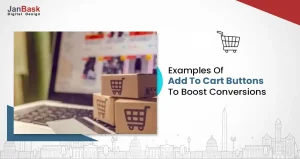
An efficient pricing strategy could mean the difference between success and failure for your e-commerce business. Should you offer lower prices to remain competitive at the expense of profit margins? Or would you rather sell at a higher price and lose out on more customers? You can grow your business with the right pricing strategy and increase its revenue and profitability. Product pricing can be established through careful research and planning for your eCommerce goals, despite being challenging.
Pricing is not just about the immediate profit but also the long-term impact on your brand's market standing. Here are some strategic tips on pricing effectively in e-commerce, empowering anyone who wants to venture into this field.
Deciding what amount to charge for items becomes more complicated as e-commerce firms scale up. Customers, however, do not consider future production costs; they consider a given product's value, which can be subjective.
According to Shopify's Future of Commerce Report 2022, price is a crucial factor influencing 74% of consumers’ buying decision. So, how many products and prices do you think a consumer sees before purchasing something on your website? Hundreds to thousands.
To emphasize that even further, let’s look at some stats:

Do not be frightened by these digits, for here lays a terrific chance to make the most of things and turn the tide around.
An eCommerce pricing strategy helps you determine which price point will yield the most customers, keep them coming back, increase sales or profits, or maximize conversion rates, depending on your end goal. Your prices affect customers' explanations of their purchases. A lower price is not a 'pricing strategy,' but discounts can be included in a general pricing strategy.
Overcharging may lead to surrendering shopping carts and losing revenues, while underpricing may only allow you your profit. Hundreds of pricing approaches exist; however, most growing ecommerce companies deploy some common ones.
The cost of producing and delivering a product must be factored into determining its price. Businesses must ensure that expenses are met while profits are earned. Production or shipping costs are likely to be transferred to the consumer or covered by the company itself. Moreover, price setting depends on managing costs to remain viable. See what options you have at your disposal to register profits for your product.
Competitive pricing is one strategy that considers this consumer behavior by setting prices according to competitors' charges. It's simple and less risky, but it only sometimes considers your customers' perceived value of your products. In short, you might lose money because selling at meager prices leads to a "race down." Here’s an example:

When reduced prices are offered, they boost product sales, enhance customers’ traffic into businesses, and assist brands in clearing their long-standing stock. At times, a marketing war of prices may also result from this strategy since companies have to match their competitors’ offers even if it means incurring losses. Usually, low-priced products that fall under loss leaders cannot be made public due to minimum advertised price (MAP) restrictions.
Applications exist designed to assist in monitoring competitor rates and imposing adjustable charges for your commodities. One such product is Prisync, which allows automatic price adjustment to increase profits whenever there are changes in the mean of competitor's pricing.
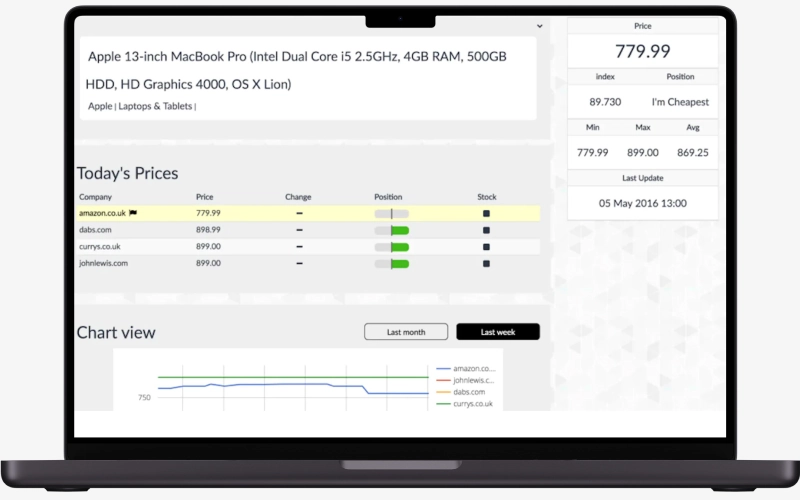
If you sell a genuinely original or unique product, a winning strategy could be price skimming. It involves registering an elevated price at the start and reducing it as more competitors come into the scene with similar items. This enables merchants to expand income levels where minimal rivalry exists later on by dropping prices in line with competition.
Price skimming is a strategy that technology companies employ to successfully lure early buyers who tend to be rich in taste. Companies using this method must ensure that their customers perceive the incoming goods as highly-priced and exclusive; otherwise, they won’t attract customers. Here’s an example.
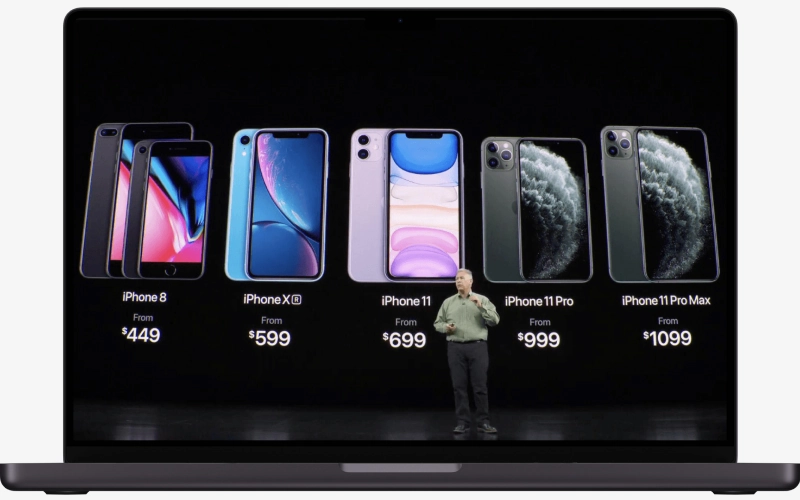
The secret of business success is solid sales and a high profit margin; for premium brands such as Apple, a pricing method that involves charging far too much so that fewer unit sales are necessary to recoup production and distribution costs is known as price skimming. This strategy enables Apple to separate itself from other competitors in the market. Additionally, by concentrating its principal factories in China, this company has created a robust supply chain that complements its profits.
Penetration pricing brings products to market at lower prices than competitors, which differs from price skimming. It seeks to increase demand for the new product, promote trial purchases, and secure a presence in the industry. The logic behind this is that making profits for a short period helps one have an ongoing presence in the market. See how this strategy works:
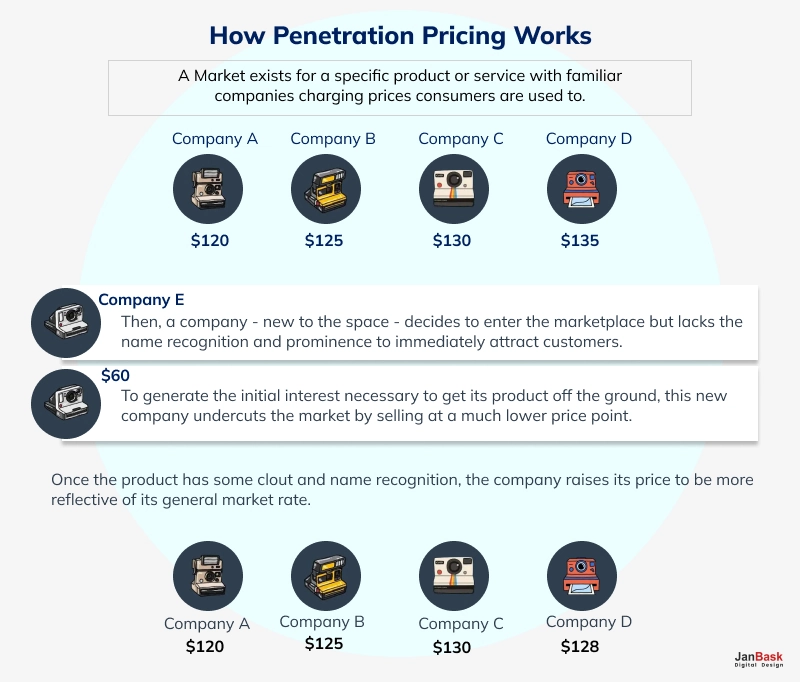
This is the exact strategy that Uber used to gain more outstanding market share.
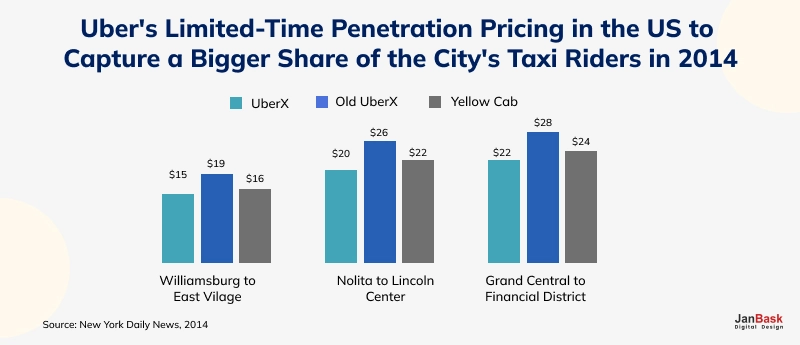
For example, in New York, taxis usually need more fares. However, on many occasions, after finishing a commute, you can be charged very high prices. It is worth noting that when Uber introduced its services initially in 2014, it received a cold response from users who claimed that, at times, UberX rides were more expensive than yellow cabs.
Uber then applied penetrative pricing by cutting transport charges by twenty percent within a certain period. After attracting many clients who became addicted to its services, this transportation company switched to more flexible pricing models. As highlighted by Bloomberg's Second Measure report in 2022, Uber controlled seventy-two percent of the ride-hailing sector in America.
Although some pricing strategies are centered on production costs, value-based pricing showcases how much a customer values your product. Organizations must thoroughly research and understand their intended clients to become reliable partners.
This pricing strategy usually has higher markups; thus, it is more profitable than competitive pricing and cost-plus pricing, making it a perfect choice for businesses inclined towards future-oriented methods.
Merchants with differentiating qualities, such as sustainability, integrated into their organizational ethos can employ value-based pricing. According to the 2021 Global Sustainability Study, about one-third (34%) of the population is ready to pay more for sustainable products or services and is willing to incur an average of 25% premium. Furthermore, this pricing strategy is wildly successful for brands with loyal customers, like those dealing in art, antiques, and luxury items.
Unlock Your Sales Potential: Get Expert Pricing Strategies Now!

Some products are combined and sold as a bundle for a lower overall cost than buying the items separately. This encourages customers to choose more expensive options because they feel they get more value for their money. Bundle pricing includes pure bundling, mixed bundles, and leader-follower bundling.
Typically, this works in several ways, such as upselling, cross-selling, and BOGO discounts. By offering products at a discounted price, you can attract more customers who may have yet to purchase them. However, poorly executed bundle pricing may lead to low profits despite high sales. Regardless, you can follow Xbox's example.

For instance, when bought from the manufacturer, the video game console ordinarily comes with one or more controllers. In this case, one product is supposed to work exclusively with the other. Therefore, selling the system without preparing for its use would be unreasonable. Individual controllers may also be purchased separately, but they would amount to nothing if you possessed any of those consoles.
Different brands can be understood differently, and sales depend on proper pricing strategies that yield maximum profit. Yet, wrong pricing decisions can reduce the profit rate, cause client losses, or even cause a total business collapse.
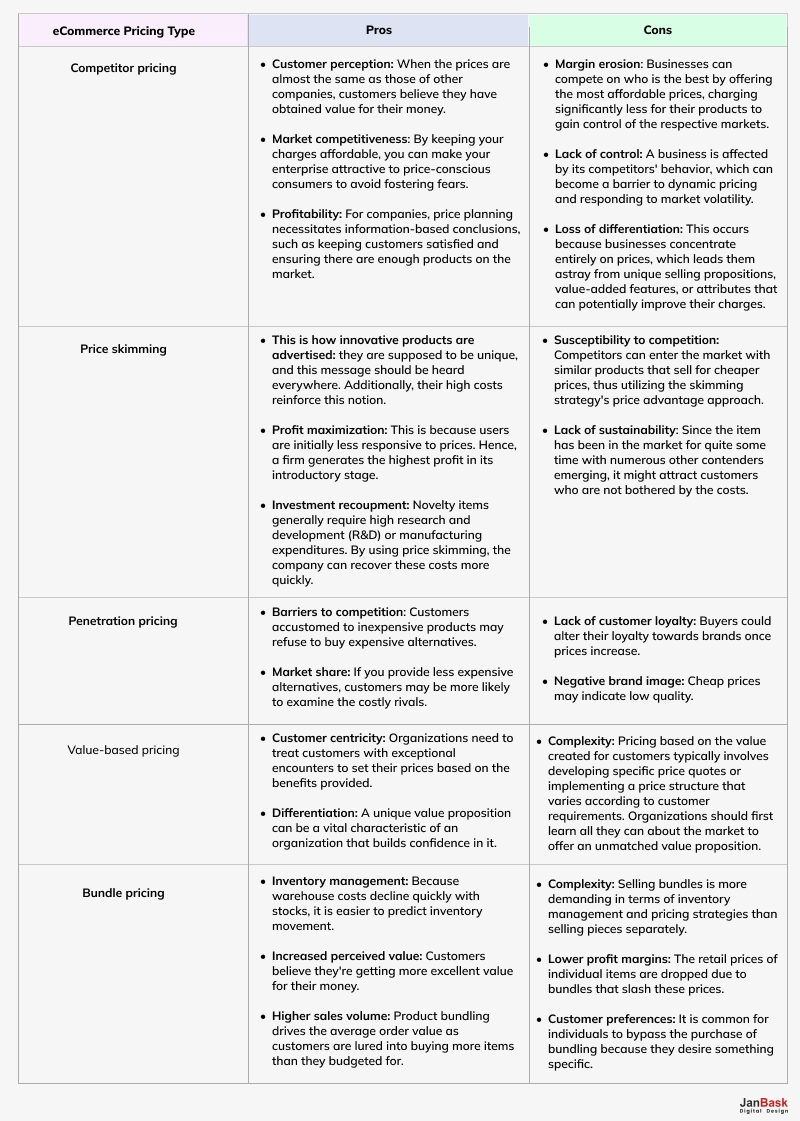
Generally, the prices of products or services businesses provide are often influenced by competitors in a similar industry. For an accurate comparison, e-commerce sites must consider whether they want their commodities categorized as high-end, average, or low-class prices. The following infographic can guide you in arriving at your pricing strategy based on previously discussed strategies.
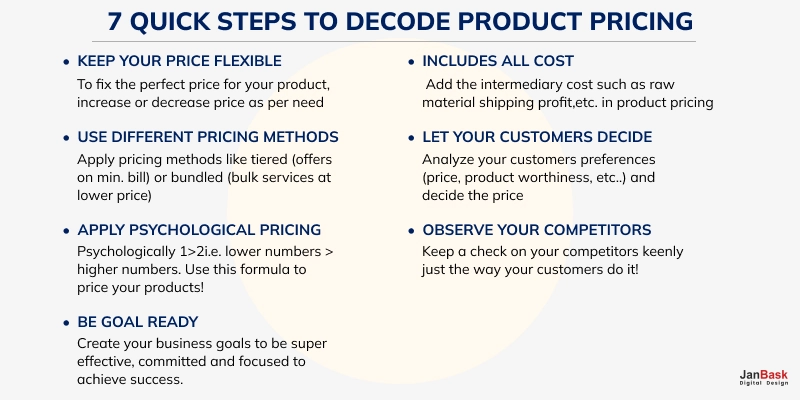
Four pricing strategies are available: cost-plus, competitive, value-based, and penetration pricing. These strategies guide businesses in setting prices for their products or services based on costs plus competition, perceived value, and market entry goals.
Commonly used by most companies are five pricing strategies: firstly, there is mark-up pricing, which involves adding on a specified percentage to the production cost as profit margin; secondly, competitor-oriented price-setting in which firms use their rivals ' prices as guides for establishing theirs; thirdly, this approach considers cus customers perceived value when determining the amount charged for it - thus termed value-based pricing – next we have penetration strategy that entails charging meager prices to attract new customers and finally skimming strategy where new products sold at high rates before any decrease occurs subsequently.
First, calculate all costs, including production, shipping, and overheads, to set prices for e-commerce. Investigate rivals' pricing competitiveness. Consider how much your target audience wants to pay and what they consider worth. Optimize your sales using different pricing strategies, such as dynamic pricing or discounts. Regularly examine and modify prices depending on your field's performance and any changes in the field's inventory over time.
E-commerce's cost model comprises fixed costs (e.g., site maintenance, hosting) and variable ones (e.g., transaction costs, shipping expenses). Also included is an understanding of inventory management expenses, advertising outlays, and customer care charges. The ability to control these expenses is critical for making profit margins and setting prices in an Internet-based business.
Full cost pricing involves finding the price of a product or service by summing up all costs related to production, including fixed and variable ones, plus an expected profit margin. This method has the advantage of covering all expenses and obtaining profitability; however, market competition may only sometimes allow this strategy.
Production and operational costs influence price, market demand, competitor pricing, customer value perceptions, and economic conditions. Customer preferences or desires and strategies for positioning a brand or series of products about other similar businesses providing similar commodities in this area also influence price, hence the result of variable pricing across seasons, for example.
Selecting a pricing strategy that can be used in the e-commerce industry takes work. Many elements must be considered, such as delivering prices, buyers' money, and supply chain management at various stages. It’s essentially a process of hitting and missing. Some are fortunate enough to get it right from the beginning; others aren’t so lucky. However, monitoring market changes is essential while adjusting price plans accordingly.
When developing an e-commerce pricing strategy, there is much to consider. The costs of materials, changes in customer preferences, shipping rates, and competition are all factors to consider before determining product prices. However, e-commerce brands that consistently adapt their pricing and logistics strategies will remain ahead of their competitors and make a profit.
To learn how JanBask Digital Design can help you register unprecedented profits on your eCommerce venture while growing your business, contact us for a quote today!
Interested in our Ecommerce Services?

Leave a Reply